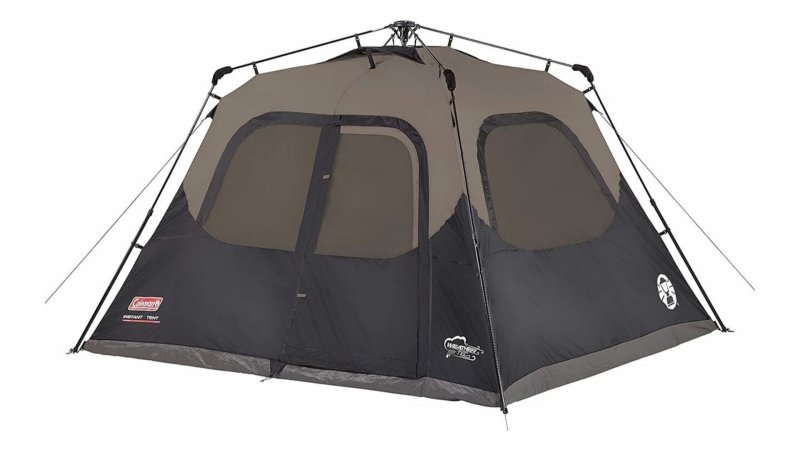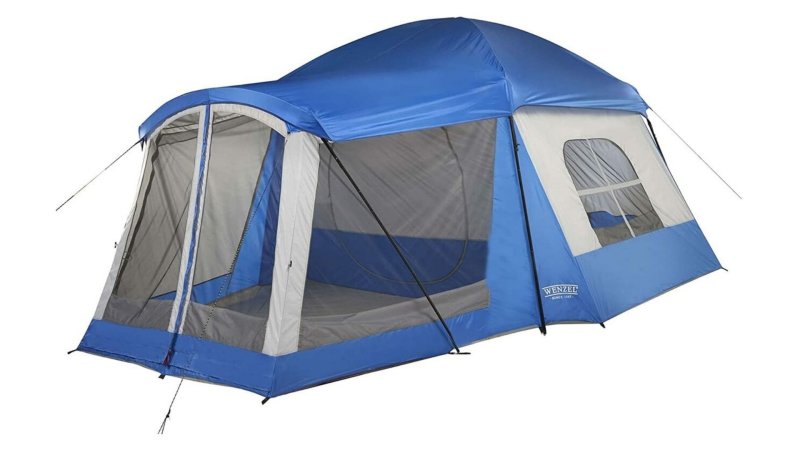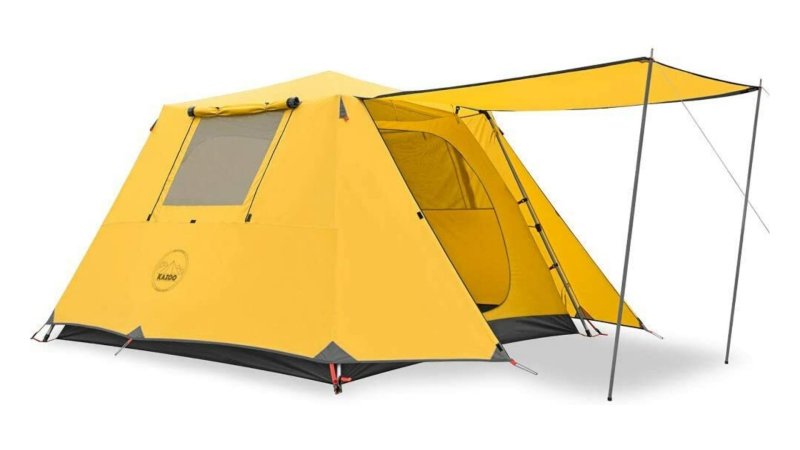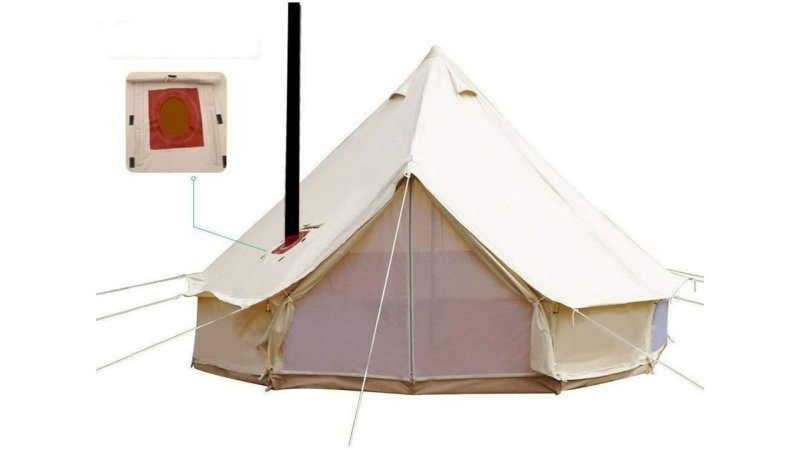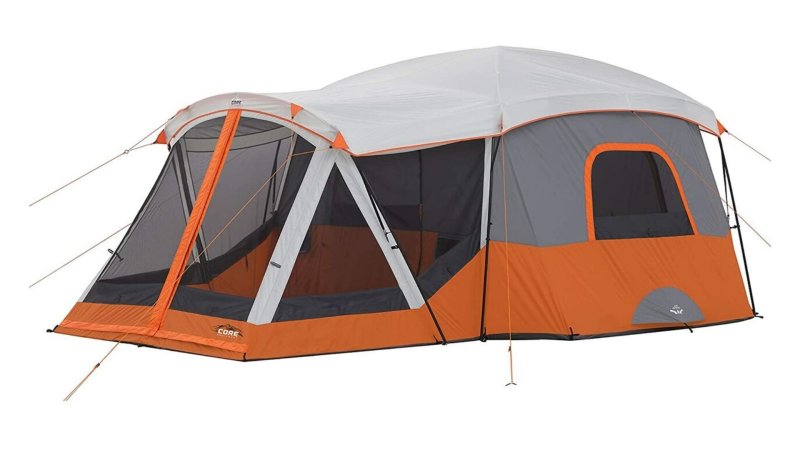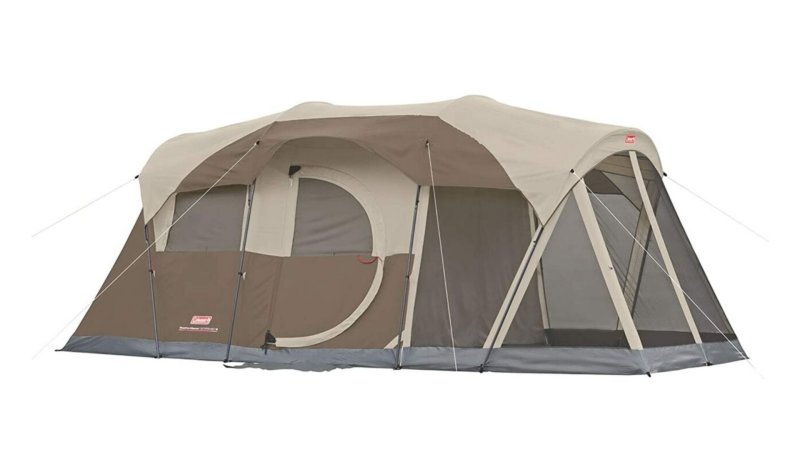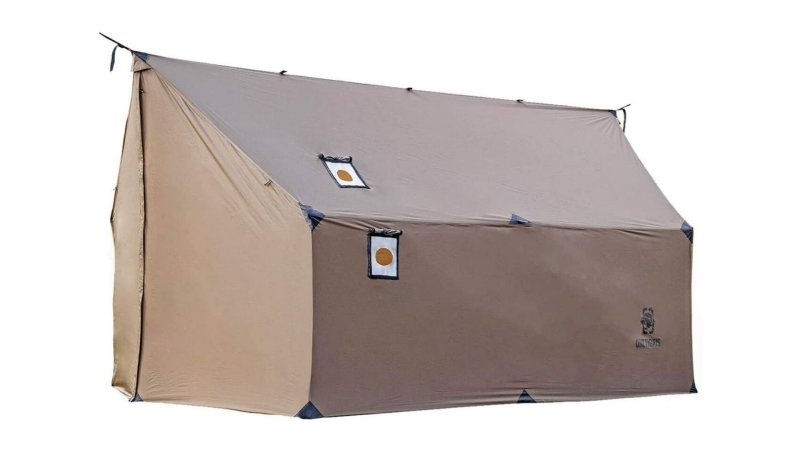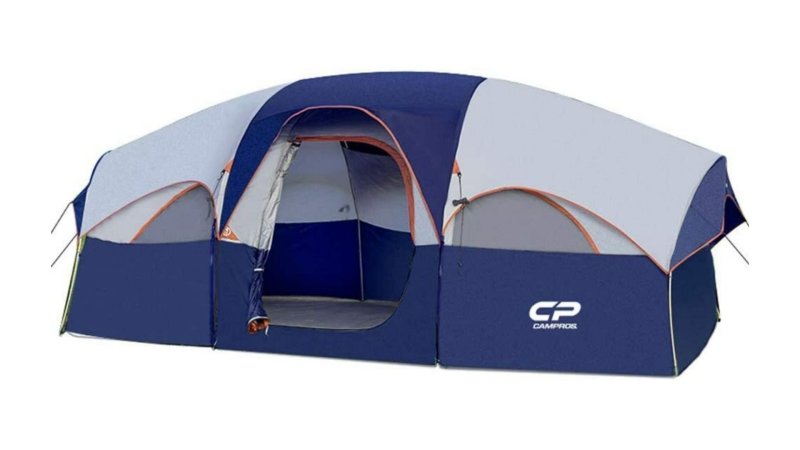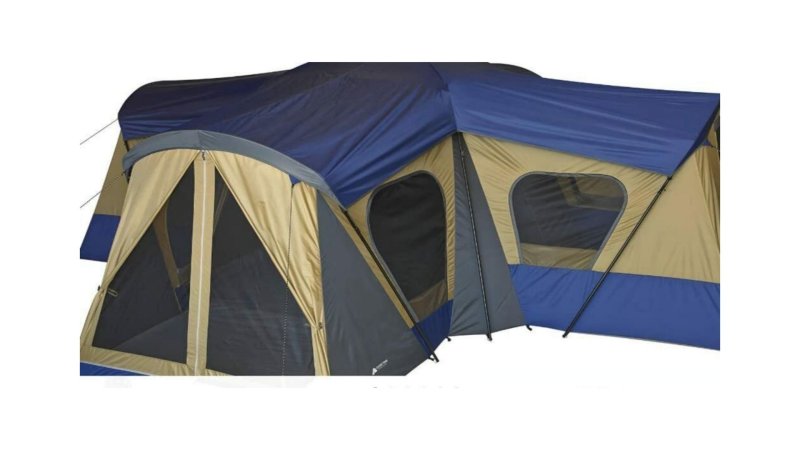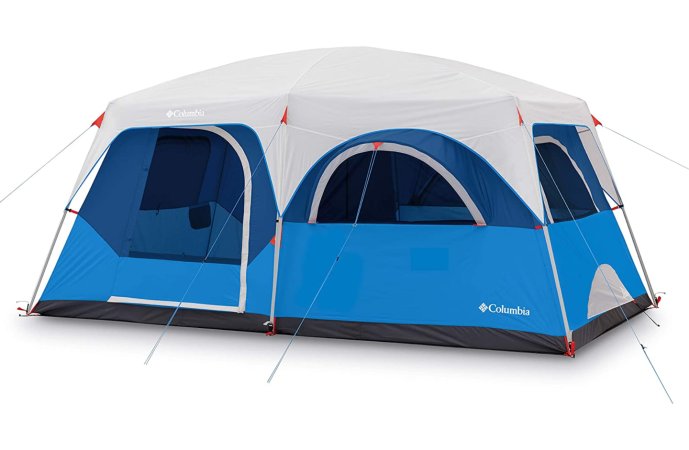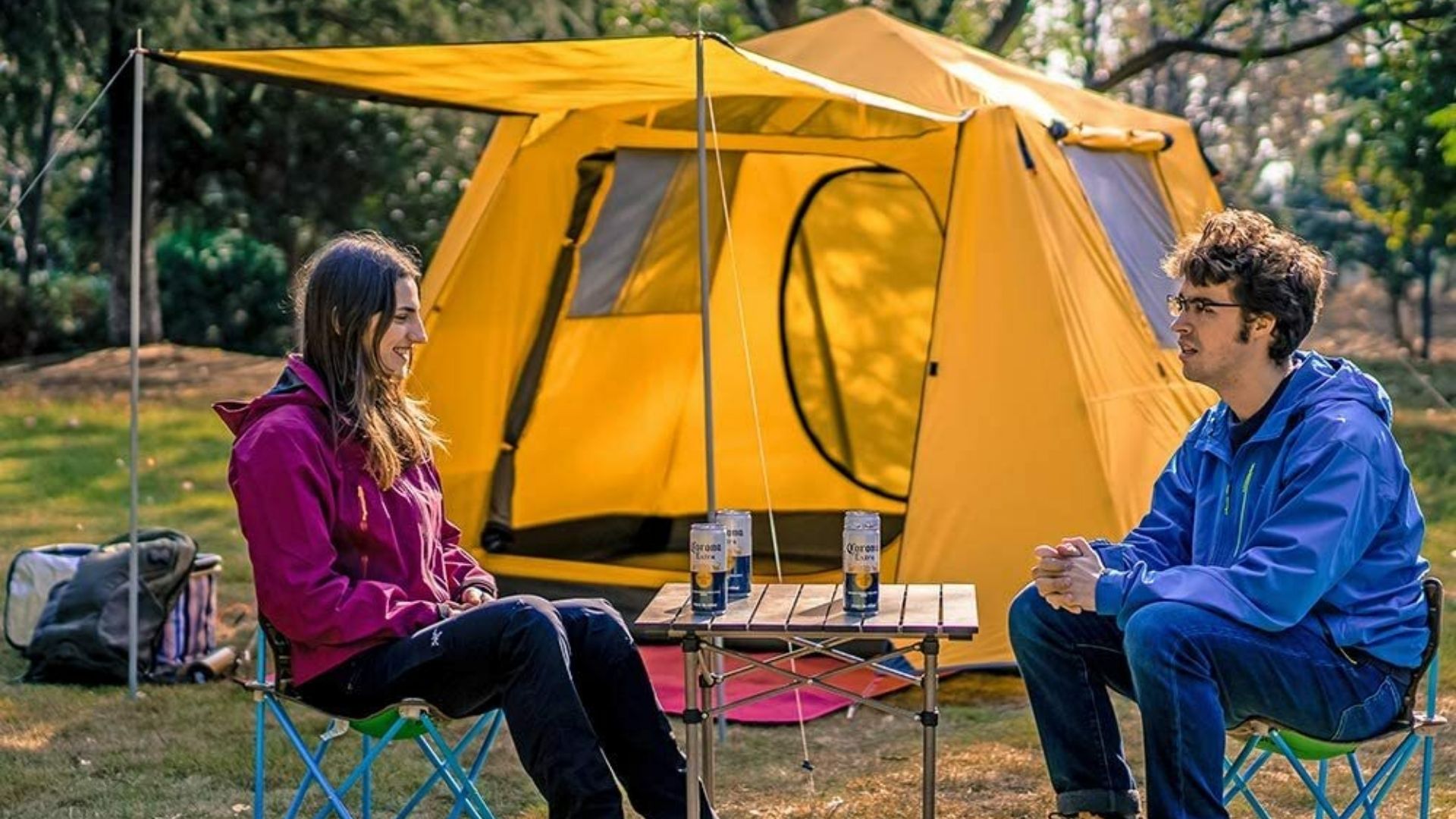

We may earn revenue from the products available on this page and participate in affiliate programs.
Sizzling grills and designer-brand coolers get all the glory, but a good cabin tent is the unsung hero of a successful cookout or car camping trip. When you bring your family to a scenic park to celebrate the Fourth of July, Labor Day, or a weekend hotdog sale at your local grocery store, being able to get out of the sun and mosquitos can keep the temperature down in more ways than one. Comfortable, happy kids lead to a much more enjoyable cookout experience.
Even though using a cabin tent probably means you have a few extra sets of hands, transportation and setup will still factor into your buying decision. If you travel with a group of friends, spreading the tent, poles, fly, and other components won’t be an issue, even if you’re traveling by foot. If your family camping trips involve kids, you might want to look at options that are easy to set up with one or two people. Terrain is another factor since dispersed campsites can’t be counted on to be as convenient as the flat, level pads at a campground. Weather and length of stay will determine how hardcore your tent needs to be. Lightweight tents are perfect for most recreational camping, but we found some seriously rugged options that can handle extended stays in all kinds of nasty weather. Some even have room for a stove and chimney.
There are plenty of sizes and styles of cabin tents available, so let us help you narrow down the selection with these top picks from some of the best outdoor adventure brands on the market.
- Best Overall: Coleman 6-Person Cabin Tent
- Best Value: Wenzel 8-Person Klondike Tent
- Editor’s Choice: Kazoo Cabin Tent
- Best Large: Unistrength Cabin Tent
- Best for Tall Campers: Core 11 Person Cabin Tent
- Most Durable: Coleman WeatherMaster
- Best Alternative: OneTigris TEGIMEN Hammock Hot Tent
- Best for Small Groups: Campros 8-Person Tent
- Best for Glamping: Ozark Trail Base Camp 14-person Cabin Tent
- Best for Car Camping: Columbia Mammoth Creek Cabin Tent
Best Overall
Coleman 6-Person Cabin Tent
Pros
- Built-in poles that snap into place make for extremely easy setup and teardown
- Built-in rainfly simplifies setup and adds additional weather protection
- Weatherproof
Cons
- At nearly 27 pounds, this is a heavy tent
- Integrated storage pockets are small
Product Specs
- Size: 10 feet x 9 feet x 6 feet
- Seasons/use: 3 seasons (may not be ideal for winter)
- Setup time/complexity: Simple, about a minute
Best Value
Wenzel 8-Person Klondike Tent
Pros
- Lots of room
- Weatherproof
- Front screen room can fit up to three sleeping bags
Cons
- Large tent area is great, but not ideally laid out for eight campers
- Screen room is a good half-a-foot shorter than main cabin
- Only two accessory pockets on walls for up to eight people
Product Specs
- Size: 16 feet x 11 feet x 6.5 feet
- Seasons/use: 3-season
- Setup time/complexity: Moderate, about 20 minutes first time
Editor’s Choice
Kazoo Cabin Tent
Pros
- Easy to set up, with its pop-up aluminum frame
- Waterproof double layers (interior polyester, rainfly ripstop polyester)
- Spacious enough for 6 people, or a family of 4 with gear
Cons
- Mesh sides offer no privacy without the rainfly
- 4-person version is barely over 5 feet high
Product Specs
- Size: 10 feet x 9.18 feet x 6.07 feet
- Seasons/use: Summer
- Setup time/complexity: Simple, under a minute
Best Large Cabin Tent
Unistrength Cabin Tent
Pros
- Massive, can accommodate 10 campers or more
- Stove hole and electrical wire inlet
- Bottom can be zipped up, providing 360 angle view
- Waterproof 300g per square meter cotton material
Cons
- It’s heavy, with the largest version weighing over 100 pounds
- Expensive
Product Specs
- Size: 23 feet x 13 feet
- Seasons/use: 4 seasons
- Setup time/complexity: Moderate/30-45 minutes
Best Cabin Tent For Tall Campers
Core 11 Person Cabin Tent
Pros
- Huge main cabin
- Seperate screen room for lounging, gear, or extra campers
- Electrical access port for a little extra luxury
- Water resistant and durable
- Integrated gear loft
Cons
- Heavy. Drive this to your campsite
- Huge main cabin could use a divider for privacy
Product Specs
- Size: 17 feet x 12 feet x 7 feet
- Seasons/use: 3 seasons
- Setup time/complexity: Moderate, about 20-30 minutes
Most Durable Cabin Tent
Coleman WeatherMaster
Pros
- Made for all seasons
- Separate side screen room for lounging or extra campers
- Electric power port for extension cord use
Cons
- A little complicated to set up
- Screen room is floorless
Product Specs
- Size: 11 feet x 9 feet x 7 feet
- Seasons/use: 4 season
- Setup time/complexity: Moderate, about 20-30 minutes
Best Alternative Cabin Tent
OneTigris TEGIMEN Hammock Hot Tent
Pros
- Super lightweight
- Waterproof and made to retain heat
- Plenty of room for a cot/hammock or two
- Stove jack ports
Cons
- Hammock not included
- Less conventional setup
Product Specs
- Size: 12.5 feet x 6.6 feet x 6.2 feet
- Seasons/use: 4 season
- Setup time/complexity: A little tricky in that you need properly spaced trees
Best Cabin Tent For Small Groups
Campros 8-Person Tent
Pros
- Lots of space for plenty of people
- Fabric room divider offers some privacy
- E-port for extension cord use
- Weather proof for light rain
Cons
- Double check the fiberglass poles (two spots were damaged on the one I tested)
- Protective fabric lining door seam tends to get caught when zipping open/closed
Product Specs
- Size: 14 feet x 9 feet x 6 feet
- Seasons/use: 4 season
- Setup time/complexity: Simple, under 10 minutes
Best Cabin Tent For Glamping
Ozark Trail Base Camp 14-person Cabin Tent
Pros
- Crazy big. If you buy this, you want space, and this delivers
- E-port for extension cord access
- Relatively simple to assemble, considering the size
Cons
- Primarily for warm weather use
- Very heavy (50lbs)
- Stakes are kind of flimsy
Product Specs
- Size: 20 feet x 20 feet x 6.5 feet
- Seasons/use: 2 seasons
- Setup time/complexity: Moderate, 20 minutes
Best Cabin Tent for Car Camping
Columbia Mammoth Creek Cabin Tent
Pros
- Very rugged and solidly built
- Sleep under the stars or install the protective roof
- Screened-in windows can be covered for privacy
- Larger and smaller sizes are available
Cons
- Very bulky; you’ll want to park close
- Commands a higher price than a lot of cabin tents
Product Specs
- Size: 14 x 8 x 6.3 feet
- Seasons/use: three seasons
- Setup time/complexity: moderate, 15-30 minutes
Why you should trust us
Task & Purpose has no shortage of gearheads who love the outdoors. Our personal experience started before I joined the military, and over the years I’ve camped in the Smoky Mountains, the hills of Kentucky, Tennessee, and the Chugach mountains in Alaska. Most of the tents you see above were individually tested. Those that we couldn’t get inside, we critically reviewed product information and paired that up with customer reviews to give you as much information as you need to make a good choice.
Types of cabin tents
Traditional
This is like your dome tent’s dad, in that it’s made in a similar fashion, just with longer, stronger rods and (usually) heavier fabrics. Compared to normal camping tents, cabin tents are much more upright and provide more space. While all the cabin tents on our list are roomy and well-built, their sizes and features are what make them unique. You can find normal tents for a single person, but the smallest cabin tents are meant for groups of four. You can always take advantage of that size to give one or two people more room, but don’t expect your cabin tent to be quite as portable or compact as a traditional alternative. Cabin tents also differ from one another in their intended length of stay. Most are designed for short-term use. Others are much more robust and can be used year-round; just remember that setting them up is quite a task.
Hammock
This is arguably not a cabin tent, but can be as roomy so we’re including it here. These tents use an old fashioned method of hanging from a line suspended between either poles or trees, with the walls pulled away, creating a long peak down the middle. These are light, and can be more easily used in more remote areas, but aren’t as secure as a traditional cabin tent.
Yurt
This style is picking up some popularity of late. Yurt tents are modelled after the portable, circular yurt dwellings of ancient Mongolia. They’re spacious, and easily set up and broken down. Typically a central pole lifts the center high, and the circular wall drapes down all around. These typically also use treated cotton type cloth (vs the synthetic fabrics most other kinds of cabin tents use).
Key features of cabin tents
Size
Since cabin tents are more about shape than size, you can find one that’s just right for you. Start small with a tent for four people, or bring the whole group with a 12-person tent. For utmost comfort, I divide the max number of people a tent can hold by 2 (so for my 3-person family, I use at least a tent for 6 people). That gives you room to sleep and have gear.
Intended use
One of your main considerations should be the duration of your camping trips. Most cabin tents are well-suited to weekend or vacation camping, but a few have the potential to serve as a long-term getaway. Those designed for extended use tend to be more costly.
Portability
Cabin tents are incredibly useful, but they’re not for everyone. If you plan on trekking into the wilderness, you’re better off with a traditional camping tent. If you can travel by vehicle, a cabin tent can be a major upgrade to your campsite.
Setup
As you might imagine, setting up a cabin tent can be a little more involved than a normal camping tent. Most tents are similar, so once you set one up, you’ll be familiar with others (but read the directions anyway! Those minor differences can make all the difference between a quick setup and a prolonged headache). Get the rest of your group to pitch in with setup and tear-down.
Benefits of cabin tents
Size
Cabin tents’ biggest advantage is interior space. If you can live with the extra weight and size on the way to the campsite, you’ll enjoy a tent that’s large enough for most people to stand comfortably in. Not having to high-crawl in and out of your tent is a perk that you’ll definitely appreciate once you experience it. Many come with extra features like awnings, screen windows, and multiple rooms. These perks make them an excellent choice for families who want to spend time together outdoors.
Amenities
This is usually dependent on how much you’re willing to spend, but many cabin tents are made to coexist with some modern amenities. Things like dividers for privacy (effectively making separate rooms), access ports for power lines, and even fireproof vents for stoves.
Pricing considerations for cabin tents
Cabin tents certainly aren’t cheap, but they’re built from quality materials and make campsite life a lot more comfortable.
Inexpensive ($100 – $150)
Four-person tents start around $100 for basic amenities and go up to $250 for higher-end options. It’s a good bet that tents in this range are only water or weather resistant, so you definitely want to apply some waterproofing and sealant to the seams.
Mid-range ($150 – $250)
Tents built for groups of six to 12 cost anywhere from $200 to $350, depending on which features you prioritize. These tents will typically use fabrics better treated to withstand water, and often incorporate things like screen rooms and e-ports for access to electricity.
Premium ($300+)
The most advanced, long-term cabin tents cost up to $1,000. At that price, you’ll get four-season lodging that could serve as a second home in the right situations. Note that these more costly tents aren’t getting any lighter, or necessarily easier to put together. You’re really buying more space, and more durability. These heavier tents may also support stove use as well.
How we chose our top picks
The tents that made this list are some of the best, most highly rated tents that we could find. They had to promise lots of space, relative ease of setup, and durability, to include weather resistance and/or waterproofing. Once we had a list of candidate products, we reviewed customer reviews to see which had solid testimonials as to quality and useability. Whenever possible, we then got our hands on the actual product to see how these tents performed in the real world.
FAQs on cabin tents
You’ve got questions, Task & Purpose has answers.
Q. How do you set up a cabin tent?
A: Most cabin tents are very similar in setup, and consist of poles and rods (often fiberglass) that create a frame to support the outer fabric. Stakes are used to secure the tent to the ground, and more stakes used with guylines to help spread out windows and the rainfly. Be sure to follow the directions provided by the tent makers. When you get a new tent (or are gifted a used one), always set it up completely at home before using it for camping. You don’t want to find out that there’s a huge gash in it, during a rainstorm while on vacation
Q. What is the purpose of a cabin tent?
A: A cabin tent is a great way for a family or group of people to camp together at an established or easy to get to camp site. They’re designed to be much larger and a little more sturdy than dome tents, which are smaller and designed to be carried into more remote locations.
Q. Are cabin tents waterproof?
A: This varies from tent to tent, but many are not actually waterproof. Most are “water resistant”, so they can hold up to a light rain for a while, but will eventually start to leak. Always check the tent’s product page when you buy to understand what kind of waterproofing/resistance your tent has. A waterproof rainfly (which is often, but not always, included) is a great way to increase a tent’s ability to keep out precipitation.
Q. Do cabin tents lose their waterproofing?
A: Yes. The amount of use and type of weather you expose your tent to will have an impact on how often you should re-waterproof it. It might seem a little counter-intuitive, but if you find yourself often camping in areas that expose your tent to little rain but lots of direct sunlight, you’ll need to re-waterproof it before too long. The sunlight can actually break down or dry out the tent’s waterproofing. For regular use, think about applying a waterproofing agent every couple of years.
